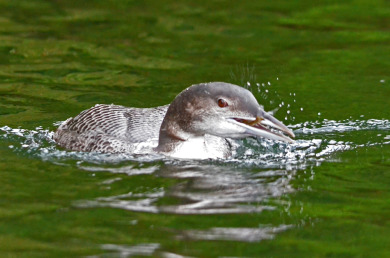By early November, the majority of adult Common Loons in Vermont have departed for the New England coast, where they will spend the winter. Based on satellite telemetry data from Adirondack and northern Maine breeding loons, most flights to the coast are completed in one or two days. One Adirondack loon took five to six days, stopping on Lake Champlain for a day.
For loon chicks, it’s a whole different story. The only chick implanted with a telemetry unit in this northeast U.S. study by the U.S. Geological Survey left its natal lake in the Adirondacks in late November and arrived on Long Island Sound in mid-January (a 50+ day journey). Many loon chicks will leave their natal lakes between late September and early November, but some stay throughout November and even into December. And a few stay right up to the time the ice forms. Some get stuck.
For the most part, do not worry if you’re still seeing loon chicks out on the water. I just received a phone call yesterday about a single loon remaining on Lake Seymour after a group of 15 loons departed a week or so ago. Chicks still have time to get that urge to migrate and figure out how to find their way to the coast on their own. In three to four years, most of them will return to within 20 miles of their natal lake – the magic of migration.
Have you seen a loon? Add your observation to Vermont eBird.
See USGS loon migration website for details about these and other loon migration stories.

